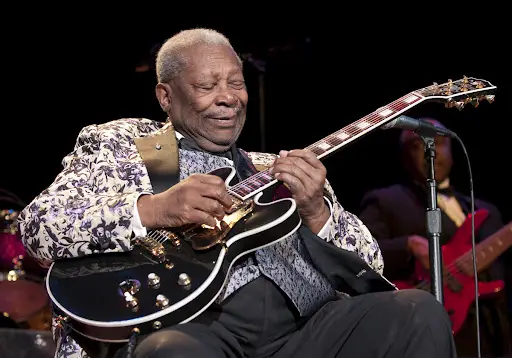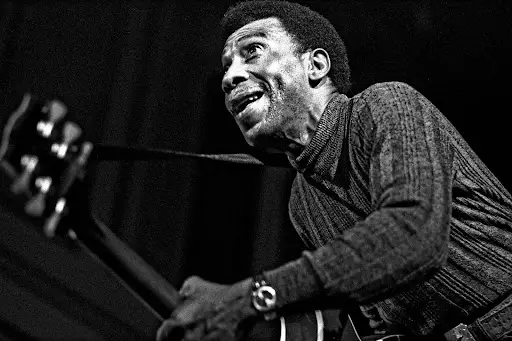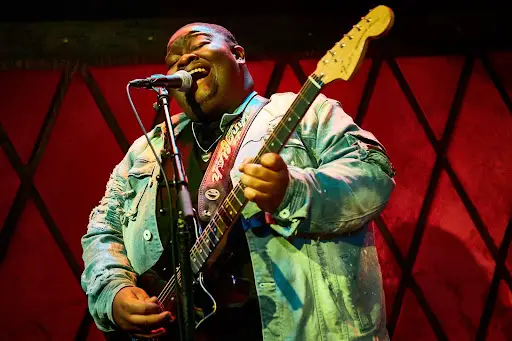The history of blues music is rooted in a community’s shared grief, sorrow, and longing for a better future. The Blues genre started with the slaves in the deep South of the USA. They held onto their oral heritage even in the face of immense hardship.
Work songs were passed on to Black American sharecroppers on plantations. It slowly developed into a genre that gave voice to the feelings and shared experiences of millions of people.
As America passed through the Great Depression and artists migrated to major cities like California, Chicago and New York. The genre quickly became popular in the mainstream, turning into what we know today as the Blues. With a twelve-bar blues scale and a range of instruments, Blues music developed into a variety of styles.
In this article we discuss the various phases in the history of blues music. We talk about the shift from rural blues to urban blues. And we cover the role Black women played in pushing the Blues to the mainstream. Also how legends from the golden age of Blues paved the way for contemporary musicians to take the stage.
Early Blues
The early blues began in the late 1800s along the Mississippi Delta. After slavery was abolished in 1865 many former slaves and their children continued to work as sharecroppers on plantations across the rural South of North America.
The earliest blues music can be traced back to African American work songs, in the years after the civil war. Those early songs retained chord patterns and a unique style that crossed over from the traditions of African slaves.
And it was that heritage that formed the backbone of the Blues.
Rural Blues
Blues music gained popularity in the early twentieth century and developed a unique style with an AAB lyric pattern. Solo vocal performances were backed by an acoustic guitar.
A Texan musician called Blind Lemon Jefferson, Mississippi artist Charley Patton, and the Georgian, Blind Willie McTell, were some of the earliest Black singers to have recorded music during the rural blues period.
While very little music was recorded at the time, blues spread through the streets. And there were performances in neighbourhoods, on corners, at bars, and juke joints.
Urban Blues (1910s-1930s)
Following the failed reconstruction and continued racial violence in the south of the USA, many Black Americans moved to big cities like Chicago, Memphis, Detroit, Philadelphia, and New York.
And so the Rural Blues gave way to the Urban Blues. The city sound was more electric, with a distinct style and feel not known before.
The Classic Blues of the 1920s and 30s pushed the genre into the mainstream thanks to the extraordinary talents of Black women. Singers like Ma Rainey, Lucille Hegamin, Bessie Smith, and Mamie Smith dominated the music scene. They recorded solo songs and hit singles with Louis Armstrong.
This made them not just popular mainstream artists, but the first African Americans to record mainstream blues music at the time.
The early blues legends’ experimentation with melody, phrasing, impact and vocal dramatisation had a lasting impact on the jazz, gospel, rock and roll, and blues music that came later.
Mainstream Blues (the 1940s-)

In the years following World War II, Blues music became a mainstream musical genre. With the Great Migration, the numbers of Black people in cities increased markedly. And with them came the marketability of Blues music.
Until then the work of popular urban blues musicians was sold under the title of race records.
The category was renamed rhythm and blues music, which meant that white audiences began listening to the Blues. This not only made the industry a lot more profitable for blues musicians, but also meant they had more opportunities to record and market blues songs.
The increasing demand meant blues legends like B.B King, Bo Diddley, and John Lee Hooker could stage big concerts across the USA and Europe. They attracted massive audiences, giving the Blues a global platform to develop and grow. And grow it did, absorbing each local dialect, style, and mood to create a range of sounds too broad to categorise.
Jump Blues
An up-tempo style, jump blues music became popular in the 1940s and normally featured a small band with horns and guitars. Louis Jordan and his Tympany Five were perhaps the most popular of the Jump Blues artists, performing with three horns and a small rhythm section.
Their songs were fun and humorous, often with a call-and-response bit to entertain the audience. With hits like Is You Is or Is You Ain’t My Baby Jordan’s music appealed to a wide range of audiences. Other artists like Roy Brown, and Joe Liggins were also popular in the genre.
Delta Blues
A subtype of the Country Blues, the Delta Blues started in the Mississippi delta and had a distinctive musical style. Delta Blues is often played with a harmonica and slide guitar, accompanied by soulful lyrics. Ma Rainey, Mamie Smith, and Bessie Smith were all Delta Blues singers.
Chicago Blues
Then there was the Chicago Blues. With its electric style and dynamic full-band sound, the Chicago blues are one of the most popular types of blues music. With artists like Muddy Waters, Buddy Guy, and Howlin Wolf immortalising the full-bodied blues sound, the style took over mainstream blues music.
Performed with a full band of drums, bass, piano, saxophones, harmonicas, and amplifiers the Chicago Blues moved fans and inspired a lot of the Rock music that came later.
West Coast Blues

The West Coast Blues gained popularity thanks to Texas musicians who settled in California. Perhaps the most popular musician of this regional style is T-Bone Walker with his electric guitar and jazzy blues songs.
Equally famous are Percy Mayfield’s – Hit The Road Jack – and Amos Milburn’s – Bad Bad Whiskey, and Pee Wee Crayton’s – Let the Good Times Roll.
The jazz influence was strong in West Coast Blues songs, with their piano melodies and jazzy guitar riffs. The compositions often featured piano, horns, guitar, and harp to create that dynamic, layered sound Los Angeles audiences loved.
Boogie-Woogie
Another popular sound of the 1920s, Boogie-Woogie, was an upbeat dance-based form of the Blues. It had a huge influence on Rhythm and Blues. Andit emerged in the mainstream, and Rock and Roll. Boogie-Woogie artists like Albert Ammons, Jimmy Yancy, and Pete Johnson popularised the sophisticated piano-based form of blues.
Louisiana Blues
Louisiana Blues performers like Robert Johnson and Skip James developed their own lax regional sound, with New Orleans jazz and Caribbean elements. With its easy tempos, soulful lyrics, and swampy effects the Louisiana Blues had a looser style than other types of blues music.
Blues and jazz have always been interlinked, and most of the classic blues genres integrated elements of jazz musicality into their compositions.
In some areas, the New Orleans sound took in elements of cajun, zydeco, and soul music. And it formed a new subtype called the Swamp Blues. Musicians like Earl King and Slim Harpo used boogie influences to develop their own swamp sounds.
British Blues History
With popular blues artists like B.B King gaining fan bases in the UK, British musicians in the 60s started developing their own blues style. From Eric Clapton to the Rolling Stones, a lot of the British blues bands moved to a more rock-inspired blues sound.
Mostly they attempted to preserve the classical blues spirit but reinterpreted it through rock instruments, studio technology, and an added dynamic stage quality.
Contemporary Blues

Many classic styles like the Chicago and piano blues inspired other musical forms like Blues Rock, Blues Jazz, and even Blues Rap. The history of blues music is an important reminder that each style and sound, although different, is rooted in the shared culture of African American communities.
The spirit of blues has always been in its ability to absorb new influences and create unique sounds. Knowing this makes it easy to see why contemporary blues artists like Kingfish Ingram, Derek Trucks, and Gary Clark Jr find it so intuitive to include rap, jam band, soul, and even South Asian elements in their music.
Final Thoughts
In the beginning, the Blues meant just that – feeling blue. As Black communities struggled to express their grief and sorrow, the Blues gave them a way to bond as a people.
Slowly the music became, not just a way to feel their sadness, but to move past it, and with styles like the Chicago and New Orleans blues. The music became a welcome reprieve from the struggles of daily life and systemic injustice.
Of course, blues music is not restricted to Black artists. And the influence it has had on the musical landscape, especially genres like Rock and Roll has been immense. But it is important to reflect on the history of blues music. And also to honour the musicians who paved the way for future generations.
The history of blues music tells us the Blues does today what it did 100 years ago. It makes you feel deeply, and share in the grief and joy of others.

